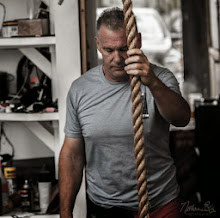When I was in engineering school to become an electronics engineer, we had a joke about mechanical engineering that the only thing you needed know about it was "you don't push a rope...".
This week I decided to re-arrange my horse paddock so that the gate to get out was closer to the manure pile. My son has left for college which means that I have picked up all of his chores as well as mine which has doubled my manure moving time. So, being the inventive type I decided that the gate being closer to the manure's final destination would save me time. I also had 20 tons of pee gravel delivered for the paddock and needed to open it so I could get the tractor in.
My ordeal was pretty simple: disassemble the panels, re-arrange them and re-assemble them. No big deal except the 12 foot long panels are pretty heavy and the ground isn't flat.
By now you're thinking what the heck does this have to do with collection? Here it is; the panels hook together with one panel having a fixed prong (male) on the bottom and a "U" shaped bolt the moves up and down on the top, while the other panel has two receptacles for these (female) that are fixed. What you do is pick up the the panel with the receptacle and drop it down over the prong on the other and then position the "U" shaped bolt over the top receptacle and drop it to connect the two panels. The problem is that when the ground is dropping away from the connection it's not easy to position the top attachments without raising the end that's dropping away. Easy enough when there's two people working on the problem, one lines things up while the other lifts the other end up so they come together. So you go from this ----|/---- to this ---||--- the right side needs to come up in this example.
What I found was it was impossible for me to be able to lift the weight of the panel by pulling from one end such that the other end came up. But this is what we are expected to believe happens in the "top line" theory of collection. The front of the horse is lifted from the rear by the back muscles.
I'm going to build a model of this theory and test the amount of force required. Of course I could just do the math, if I remembered how.
Thursday, September 3, 2009
Subscribe to:
Post Comments (Atom)




No comments:
Post a Comment